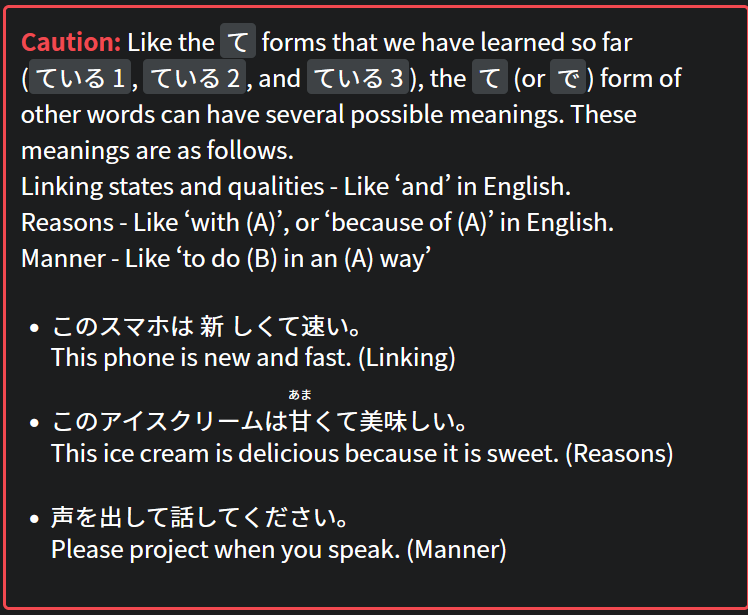months later revising stuff and back here again 
Isnt the interpretation of the 1st and 2nd example with an adjective following another quite a subjective thing?
In my understanding the first sentence could also be seen as “This phone is fast because its new” (eg. if the context was that someone is surprised your phone is so much faster than his/hers) instead of “fast and new”
→ I also assume the “because” here is relatively “soft spoken” and more of a neutral statement and not as conclusive/set in stone (compared to the emphasis particles like から/ので put on cause/effect of two things/actions/phrases) as well?
Likewise the second one could work with “sweet and tasy”…?
Quite ambigious to me, because sometimes context will make one interpretation seem more likely than the other, but in many cases we cant tell exactly, no?
Ofc I guess if two adjectives are closely linked in meaning to another as sweet and tasty are with “sweet” being a kind of flavor, one being the reason for the other makes sense… But in cases like the one with the “new and fast” phone, I am often left wondering how to correctly understand those phrases when I encounter them in the wild.
It definitely doesnt really hurt my understanding when reading something, but I would like to get behind any “clues” of the “nuance” per case.
Anyways going in circles: Are there some common points in how to tell those apart or is it in the end up to interpretation in a given context?





